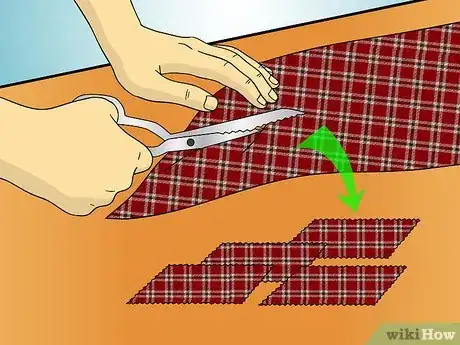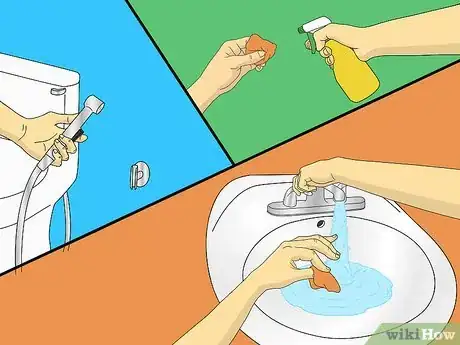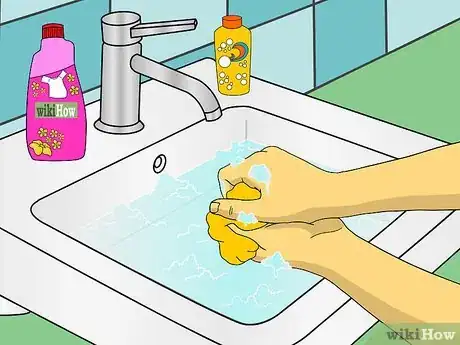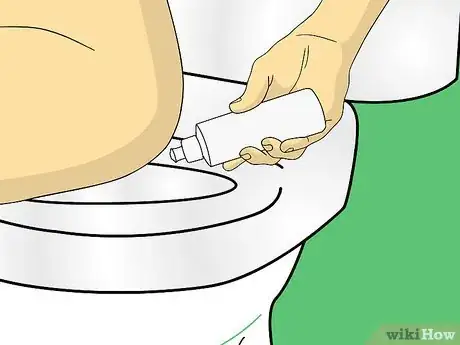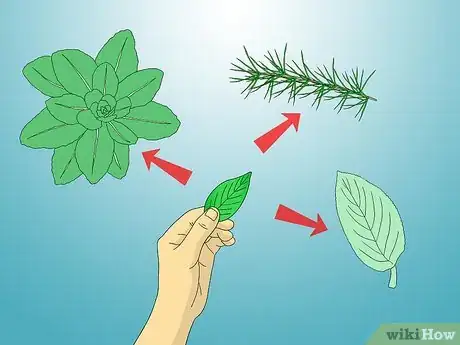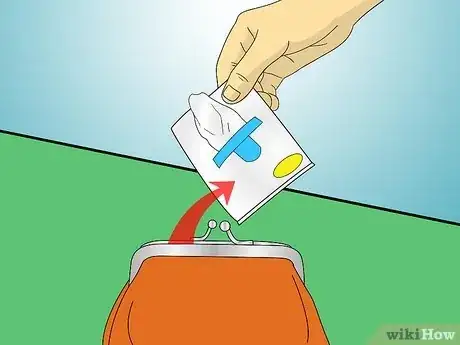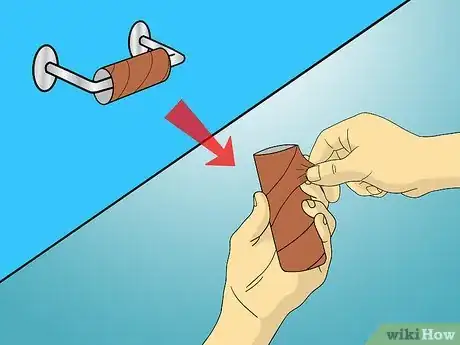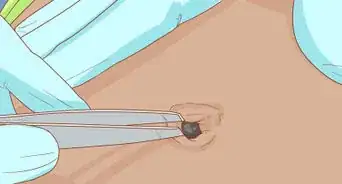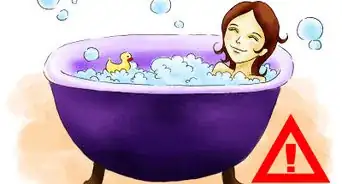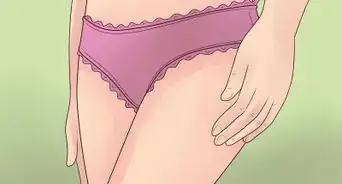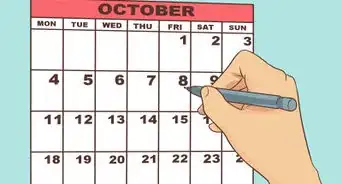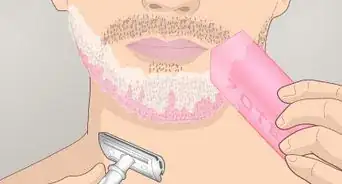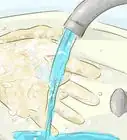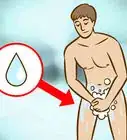wikiHow is a “wiki,” similar to Wikipedia, which means that many of our articles are co-written by multiple authors. To create this article, 22 people, some anonymous, worked to edit and improve it over time.
There are 8 references cited in this article, which can be found at the bottom of the page.
This article has been viewed 242,794 times.
Learn more...
Making toilet paper takes plenty of wood, electricity, and water. Reusable cloth may sound icky, but any parent who's used cloth diapers can tell you they aren't that scary. Give it a try and see if you find it more comfortable. You can also find natural "toilet paper" while camping.
Steps
Making Reusable Cloth Toilet Paper
-
1Tear up rags for a trial run. Wash whatever rags or old clothing you have around. Tear them into squares measuring 4x4 inch (10x10 cm) or larger. Try a sports jersey or washcloth, since these tend not to fray.[1] This is a cheap way to try out the idea. Keep reading for more durable options, followed by instructions for use.
-
2Make your own from flannel. With a little initial expense, you can make a long-lasting, comfortable "toilet paper." In the long run, it will make a big difference in household expense and environmental impact. Here's how:
- Buy a yard of cotton flannel from a fabric store. Choose a patterned cloth to hide stains.[2] If your family is squeamish about sharing these, buy one pattern per person.
- Cut into squares between 4 and 6 inches (10–15 cm) on each side. Ideally, use pinking shears to reduce fraying.
- Optionally, stitch around the edges with a serger, preventing fraying. Flannel rarely frays anyway, so this is not required.[3]
Advertisement -
3Set up your storage system. Set up an open container for the clean cloths. Choose a second container with a lid for the used cloths. Ideally, use a small trash can that you can open by stepping on a pedal. Line this with a pillowcase so you can easily transfer the cloth to the washing machine.[4]
-
4Wet before wiping (optional). You can use the cloth toilet paper dry, which keeps odor low in the used container.[7] However, a little water might make the cloth more comfortable and easier to wash. There are several ways to add this to your bathroom routine:
- Wet the cloth in the sink or with a spray bottle before wiping.
- Rinse yourself with a bidet before wiping.
- Dampen the stack of clean cloths each time you load the container. Due to the risk of mildew, you'll need to wash remaining cloths every two or three days.
-
5Wipe as usual. There's no special trick here. Cloth will clog the plumbing if flushed, so tell the household to use the container for used cloth.
- You can use "personal cloth" for both urine and feces. Some households choose to use it only for urine, and stick to regular toilet paper for feces.
-
6Wash the cloth. About every two or four days, toss the pillowcase and the used cloth into the washing machine. You can combine them with any other laundry except for towels, kitchen cloths, or jeans (which may trap the cloth in pockets).[8] To ensure they are disinfected, follow these guidelines:[9] [10]
- Agitation is an important part of cleaning. Wash laundry loads large enough to rub against each other, without tightly packing the machine.
- If residue remains, increase the length of washing or the amount of detergent or (for high-efficiency washers) the amount of water.
- Use the high-temperature setting.
- Add bleach to the laundry, or sun-dry as a more eco-friendly disinfectant.
Staying Clean while Camping
-
1Rinse with a spray bottle. Spray yourself clean with a peri bottle, or any other water-spraying device. You can find a peri bottle in a pharmacy or baby supply aisle.[11]
-
2Identify soft leaves. Most leaves are scratchy and unpleasant. A few species are soft enough to earn the names "cowboy's" or "lumberjack's toilet paper." Look these up in a local wildlife guide before your camping trip:
- Common mullein (Verbascum thapsus), found virtually throughout the world.[12]
- Lamb's ear (Stachys byzantina), native to Asia but cultivated in most temperate climates.[13]
- Pine needles still attached to the branch.[14] This may not be as comfortable as other options, but the natural brush shape makes it easy to wipe.
- Moss is comfortable, but messy if it falls apart.[15]
-
3Use a smooth stone. An oval river stone is a common wiping tool in cultures without toilet paper. It sounds strange, but these are easy to find and comfortable to grip. Just make sure not to point any sharp edges at the wrong place.
Using Quick Solutions
-
1Carry around a tissue pack. Stick a travel-size pack of tissues in your purse or luggage. This is the next closest thing to toilet paper.
-
2Prepare the cardboard paper roll. You know that cardboard tube that's still hanging up on the roll when all the toilet paper is gone? Start peeling the layers of paper off it until you have enough to wipe with. Wet it at the sink to make it soft and comfortable. Flush when done.
-
3Wipe with a sponge. Although popular among the Romans, this method is no longer considered a great idea. Sponges pick up filth and bacteria quickly, so you'd better know where the sponge has been. After you're done, submerge the sponge in diluted bleach, any product containing quaternary ammonium, or boiling water. Take it out after five minutes.[16]
Community Q&A
-
QuestionWill I get into trouble if I do this?
 Community AnswerThat really depends on your parents. There's no reason you'd get in trouble with anyone else. You're not really doing anything wrong, it's just pointless if you have access to toilet paper. This is meant to be used in emergencies when you don't have toilet paper.
Community AnswerThat really depends on your parents. There's no reason you'd get in trouble with anyone else. You're not really doing anything wrong, it's just pointless if you have access to toilet paper. This is meant to be used in emergencies when you don't have toilet paper. -
QuestionWhat if you don't have access to a cloth or things like that?
 Community AnswerYou could use a leaf if you are outside, or if worst comes to worst, use a piece of clothing.
Community AnswerYou could use a leaf if you are outside, or if worst comes to worst, use a piece of clothing. -
QuestionWhat if I don't know that there is no toilet paper?
 Community AnswerTissues in your bag are an essential. Always keep a packet of tissues in your handbag or bag wherever you go. You never know when there might not be any toilet paper! If it is at the toilets in the mall, or the girls/boys toilets at school, and you don't carry any tissues on you, call out for someone washing their hands or something and tell them you need some toilet paper. Or you could say you need some paper towels because your nose has just started bleeding (even if it hasn't). If they are nice, they will help you out.
Community AnswerTissues in your bag are an essential. Always keep a packet of tissues in your handbag or bag wherever you go. You never know when there might not be any toilet paper! If it is at the toilets in the mall, or the girls/boys toilets at school, and you don't carry any tissues on you, call out for someone washing their hands or something and tell them you need some toilet paper. Or you could say you need some paper towels because your nose has just started bleeding (even if it hasn't). If they are nice, they will help you out.
Warnings
- If using leaves in the great outdoors, check you're not wiping with poison ivy, prickles, or insects.⧼thumbs_response⧽
- If someone in your house is sick, wash personal cloth separately from clothing.⧼thumbs_response⧽
- Residue buildup in the washing machine can spread bacteria. If you do not use hot water and bleach, periodically run your washing machine with nothing but water and bleach for a full cycle.[17]⧼thumbs_response⧽
References
- ↑ http://www.sustainablebabysteps.com/recycled-toilet-paper.html
- ↑ http://www.sustainablebabysteps.com/recycled-toilet-paper.html
- ↑ http://www.sustainablebabysteps.com/recycled-toilet-paper.html
- ↑ http://becomingpeculiar.com/our-switch-to-cloth-wipes-a-k-a-cloth-toilet-paper/
- ↑ http://www.frugallivingnw.com/reusable-cloth-toilet-paper-faqs/
- ↑ http://www.sustainablebabysteps.com/recycled-toilet-paper.html
- ↑ http://www.sustainablebabysteps.com/recycled-toilet-paper.html
- ↑ http://www.sustainablebabysteps.com/recycled-toilet-paper.html
- ↑ http://www.ecobabysteps.com/2013/03/12/your-washing-machine-and-cloth-diapers/
- ↑ http://www.medicaldaily.com/laundry-bacteria-could-be-your-clean-clothes-ways-reduce-germ-growth-your-wash-253557
- ↑ http://www.offthegridnews.com/how-to-2/oh-no-there-is-no-toilet-paper-what-do-i-do/
- ↑ http://www.offthegridnews.com/how-to-2/oh-no-there-is-no-toilet-paper-what-do-i-do/
- ↑ http://www.offthegridnews.com/how-to-2/oh-no-there-is-no-toilet-paper-what-do-i-do/
- ↑ http://www.shtfblog.com/10-natural-substitutes-for-toilet-paper/
- ↑ http://www.shtfblog.com/10-natural-substitutes-for-toilet-paper/
- ↑ http://search.proquest.com/openview/8508f6cdd54d5692d03ff82c87ed844f/1
- ↑ http://www.medicaldaily.com/laundry-bacteria-could-be-your-clean-clothes-ways-reduce-germ-growth-your-wash-253557
About This Article
If you’re out of toilet paper, there are several substitutes you can use until you’re able to get some more. One option is to use wet wipes or baby wipes. If you're in a bind, you can also use crumpled up pieces of paper. Crumpling the paper multiple times helps to soften it. Any kind of paper will work, like paper towels, newspaper, napkins, or printer paper. Another option is to make reusable cloth toilet paper. Cut some soft fabric into squares and store them in your bathroom. When you’re finished using one, toss it in a sealed container to be washed later.

